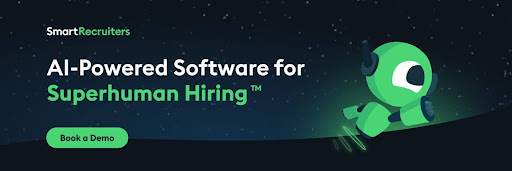As most candidates (and certainly all recruiters) know, hiring is not a perfect science. For all that individuals and organizations attempt to create and codify an effective process, high quality recruitment remains elusive for many.
Oftentimes the issue stems from the disconnect between what an organization desires in a role and what it actually entails. For example job postings can be superfluous, describing the ideal candidate, one that can do anything and everything to advance the organization’s goals within a certain position. But that’s not always what’s needed. I once worked with a client that demanded a bachelor’s degree plus 2-3 years experience for an entry level role! Needless to say, it took forever to find a candidate to fill it, one that fit the organization’s (perceived) need.
Another issue that makes hiring difficult is that many organizations overlook cultural fit. It’s safe to say that many candidates will possess the technical skills desired. How many will be a good fit within the organization’s cultural context?
Most of my career has been spent in the retail industry. Within that arena, no two retailers are alike, not only in terms of their respective business models, but in their value systems. Some placed a high emphasis on teamwork, others sought talent that had a clear understanding of the brand’s market position and knew how to further enhance it. For candidates, just because you worked for one particular retailer didn’t automatically mean that your skill set translated to another’s business.
A way in which to offset this is designing a competency model for roles within the organization. A competency model is a tool by which an organization describes and defines which forms of behavior and skills are necessary to perform a function, and at what level. To simplify the previous sentence, a competency model highlights what an organization considers important from its members.
When properly designed, a competency model allows individuals to gain a few insights:
- What Knowledge, Skills, and Abilities (KSAs) are considered critical to an organization? This ties into its culture: what it values, how they expect members to perform and conduct themselves, and what KSAs they encourage or discourage.
- How those KSAs contribute to organizational success. A competency model should tie into the strategic goals of the organization. If individuals members are in-line with, and are fulfilling the expectations of the organization, then the organization is strengthened as a result.
- How gaining or improving in certain KSAs can allow an individual to gain further mastery in a function (for example, going from an entry level role to a more senior one).
Having effective competency models then enables recruiters and business leaders to evaluate candidates better through the use of assessments. Candidate assessments help to further weed out poorly qualified candidates, but it also enables recruiters to further differentiate them.
Within these examples (the disconnect between an organization’s wants, needs, and culture fit) is the understanding that organizations must have the strategic as well as technical capability to quantify, capture, and analyze the data necessary to make effective recruitment decisions. From a strategic perspective, business leaders must move away from a reactive hiring mentality to a more pro-active one. What is the organization’s vision? Where does its recruitment strategy fall within that vision? If recruiters and other business leaders have not directly tied the vision to the recruitment strategy, then all its doing is managing headcount, which means it will consistently be behind the curve.
Recruitment Strategy
From technical standpoint, capturing relevant data regarding an organization’s current and (more importantly) potential talent needs is critical. Unfortunately, this is easier said than done. Organizations may not have a quality talent management solution, or know how to effectively utilize the data within it. Some of that is due to poor design. On top of that, many solutions are not well designed to communicate with candidates across platforms, whether it’s PCs, laptops, tablets, or mobile devices.
Having a well designed recruitment platform provides several advantages:
- Ease of use. Candidates are looking for simple and effective ways to apply for a desired role. If they’re interested, applying should be a straightforward process!
- Personalized attention. Candidates hate Applicant Tracking Systems because of their impersonal nature. When they apply, they may not get a response, or worse, just an automated reply. An effective system provides the ability to be engaging, meaning that recruiters and hiring managers should be able to create responses that speak to a candidate. This applies to all candidates, whether or not they are qualified for the advertised position. If candidates are viewed as customers, this makes sense. Just like sales associates are trained to make all customers happy, regardless of whether or not if they make a purchase, recruiters should be of the same mindset. This creates and maintains a positive brand awareness, making recruitment easier overall.
- Speed to hire. Great candidates don’t linger. To be able to secure one, it makes sense to have a system which will provide a way to move a candidate through assessment, interview, background checks, and job offers in a relatively short amount of time. This includes reducing your response times with the use of a business facing mobile hiring app. If your hiring team doesn’t promptly engage, candidates will lose interest and go elsewhere.
While hiring is not a perfect science, having a well designed proactive recruitment strategy helps organizations stay competitive. It must be tied into the business’s overall vision and strategic objectives. Roles must be accurately calibrated across a variety of dimensions, in order to provide a clear snapshot of what talent is needed. And the recruitment platform must be well designed. It must take into account the abovementioned strategic factors. It must also provide ease of use, personalized attention, and allow for speed to hire. This will result in better hires and a stronger organization.






